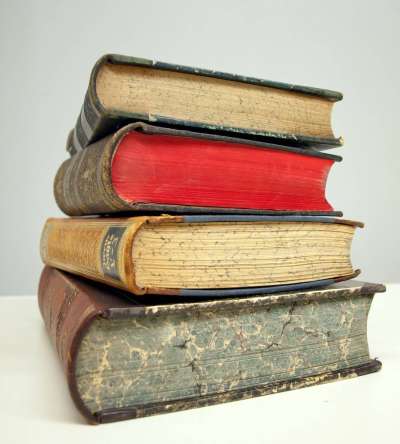Enhance understanding with a teaching guide for Nectar in a Sieve, which explains various Indian cultural practices and other information necessary for a full understanding of the short novel.
Page 3 of 5
BEFORE READING THE NOVELKamala Markandaya's Nectar in a Sieve English
- Vocabulary
Although the Indian words are kept to a minimum, students should be introduced to the glossary at the end of the novel and also be shown how to use context clues. For example:
" Deepavali, the Festival of Lights..."
"those who could afford it wore silver golsu clasped round their ankles..."
- Other important words and concepts may need to be introduced to students unfamiliar with them:
- dowry - items of importance and wealth given by parents to daughter and husband at marriage
- arranged marriage
- midwife - person who helps with birth of children
- importance of male children in agricultural economies
- peasants - work land they do not own; pay rent in money or crops to land owner
- headman - head of the villagers
- collector - person who collects rent or crops from peasants for landowner
- dung - cow droppings, collected and used for manure, fuel, and building
- sari - cotton or silk fabric draped over the shoulder and worn around the body by Hindu women
- bullock cart - carts pulled by young or castrated bulls
- thatch - natural roofing material, such as straw
- paddy fields - rice fields
- granary - storehouse of grain
- caste - Hindu society is divided into four hereditary social divisions which dictate, among other things, the jobs that can be held:
- priests - Brahmans
- warriors and rulers - Kshatriyas (or Rajanyas)
- producers - farmers, merchants, craftspeople the Vaishyas
- serfs and laborers - Shudras (or Dasyus)
- bier - a frame or stand on which a coffin is placed usually before a cremation
- fallow - barren, land left unplowed and unseeded
- albino - a person who lacks usual pigmentation, usually has white milky skin, very light hair, and pink eyes
- Have students brainstorm how a rural, agricultural society differs from an industrial society. Be sure they include the roles of men and women in those societies.
- Examine the title of the novel, Nectar in a Sieve, and the Coleridge quotation on the introductory page. Have students brainstorm the meaning of the quotation and ask students what they think the novel will be about.*
- Read aloud to students the first chapter of the novel. Discuss with the students the two time periods in the first chapter. What do the first two pages tell us of what will happen to Rukmani? Who is telling the story? When is it being told?
- After you have established with the class that the novel is written in the first person, have them discuss in small groups the limitation of using first person. Why might an author choose to use first rather than third person?
- On chart paper record the names of the major characters and their relationships (see Main Characters).
- Have students select one of the main characters (Ruku, Nathan, Kenny, or Ira) to follow his/her development throughout the novel. Have them underline or copy in their response journals key quotations that help in understanding the character's beliefs and motives.
- Have the students discuss other books they have read that examine peasant cultures and/or arranged marriages. They might list the titles of these works on chart paper so that other students can refer to them or they can be used in the thematic unit.*
Social Studies
- It might be useful to include some of the activities suggested for English classes, particularly the vocabulary and character studies, in social studies as well. Likewise, several of the activities suggested for social studies will also be useful in English classes.
- Copy the Background Information from the teacher's guide. Have the students read and discuss it. Or, place the students in small groups and have each group read and present one section of the background information to the class.
- Find India on a map or globe. Have students examine its size, population and important products. Also examine its topography. Students might produce their own maps of India to keep in their journals.
- Find Ceylon (now Sri Lanka) on a map or globe. Have students find out when and why the name of the country changed. Students might also examine the country's currency, exchange rates, and language. They can produce a map of Sri Lanka for their journals.
- Have students research Hindus and Muslims (see Background Information). They can discuss with the class or small groups conflicts that might exist between the Hindu and Muslim cultures in India.*
- Have students in small groups select one of the following short research topics about India to explore in the library and present to the class: family life today, family life in the early 20th century, rural life today, rural life in the early 20th century, industrial development, Indian marriage customs, the British colonization of India, climate and agriculture, Hindu art and architecture, disease prevalent in the early 20th century, and the Irawaddy River.*
- Show a film or video about India today or during British colonization (e.g., Queenie or Gandhi).
- Play traditional music of India while students look through books or see slides on the art and architecture of India. If possible, have students sip some Darjeeling tea while they are doing this.
- If possible, arrange for guest speakers, perhaps students in your school or their parents, to discuss contemporary India with the class.













